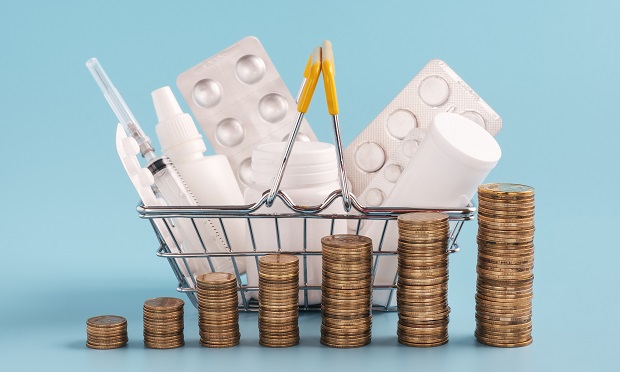 Policies to rein in unregulated annual increases in list prices for brand-name drugs may have important consequences for patient out-of-pocket spending,
Policies to rein in unregulated annual increases in list prices for brand-name drugs may have important consequences for patient out-of-pocket spending,
Given the limited understanding of how drug prices affect patient out-of-pocket costs for commercially insured individuals, a team of researchers set out to examine the correlation between changes in list prices, net prices, and out-of-pocket spending for brand-name drugs.
Led by Benjamin Rome, an instructor of medicine at Harvard Medical School and an associate physician in the Division of General Internal Medicine & Primary Care at Brigham and Women's Hospital, the study included 79 drugs used by commercially insured patients between January 2015 and December 2017. The results were published earlier this month in JAMA Network Open.
Recommended For You
Researchers found that median increases were 16.7% for list prices, 5.4% for net prices, and 3.5% for out-of-pocket spending. Most notably, among the 53.7% of patients who paid any drug deductible or coinsurance, median out-of-pocket spending increased by 15.0%. This means that some commercially insured patients are insulated from paying more when drug list prices increase, but patients with deductibles and coinsurance pay more when manufacturers raise a drug's list price. Among these patients, there was no evidence that manufacturer rebates to insurers are associated with patients' out-of-pocket spending. Policies to rein in unregulated annual increases in list prices for brand-name drugs may have important consequences for patient out-of-pocket spending, researchers noted.
"I think most people who work in insurance … and health policy experts recognize this problem, which is that a growing number of patients are paying coinsurance and deductibles that are based on the list price of the drugs," Rome told healthline.com. "I don't think our findings are terribly unexpected in that sense, but they do prove a key point that I think has big policy implications as Congress and states figure out how to get their pricing under control."
Indeed, increasing prescription drug prices have been an ongoing source of concern. In 2018, for example, the United States spent $476 billion on prescription drugs, with 80% of spending on brand-name products. Brand-name manufacturers freely set list prices for their drugs at whatever level they choose, and those prices increased by 9.1% per year on average over the past decade, according to Rome.
For many drugs, manufacturers have offset increasing list prices by providing confidential rebates negotiated with pharmacy benefit managers and insurers. Although rebate levels vary greatly by drug class, some have estimated that despite continued year-over-year increases in list prices, growth in net prices after accounting for rebates has slowed or halted since 2015, particularly for certain drug classes. That said, rebates negotiated by insurers are not necessarily reflected in the out-of-pocket prescription drug costs borne by patients. Patient spending at the pharmacy counter — including copayments, coinsurance, and deductibles — accounted for 14% of all U.S. prescription drug spending in 2018, the study noted.
Rome and his team of researchers concluded that "policymakers seeking to limit price increases among brand-name drugs should consider how any proposed policies affect patient out-of-pocket spending."
© 2025 ALM Global, LLC, All Rights Reserved. Request academic re-use from www.copyright.com. All other uses, submit a request to [email protected]. For more information visit Asset & Logo Licensing.







